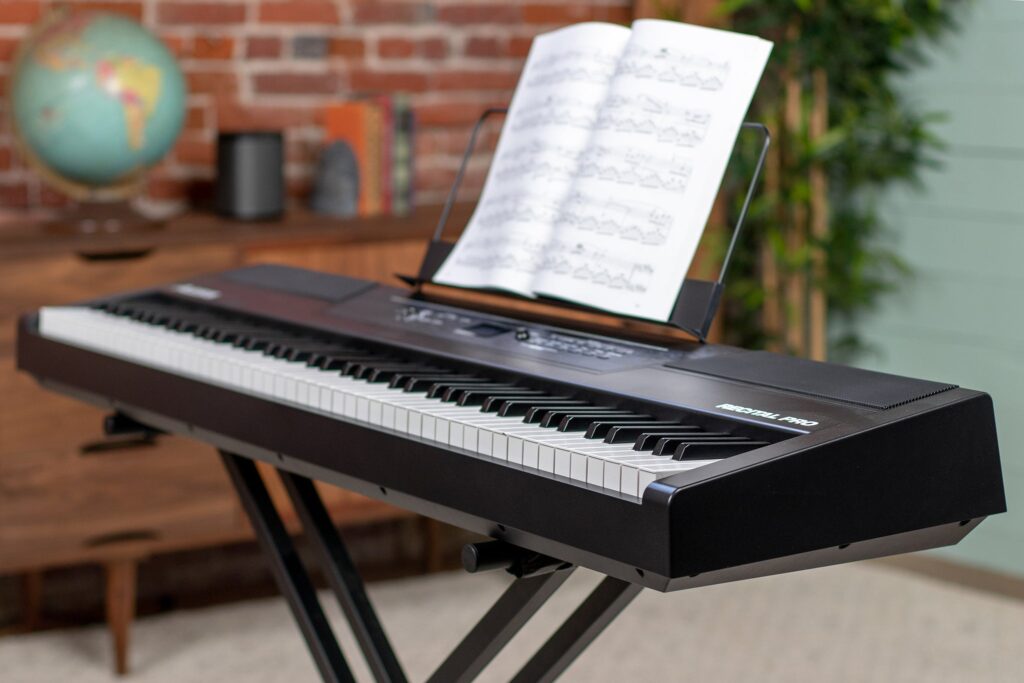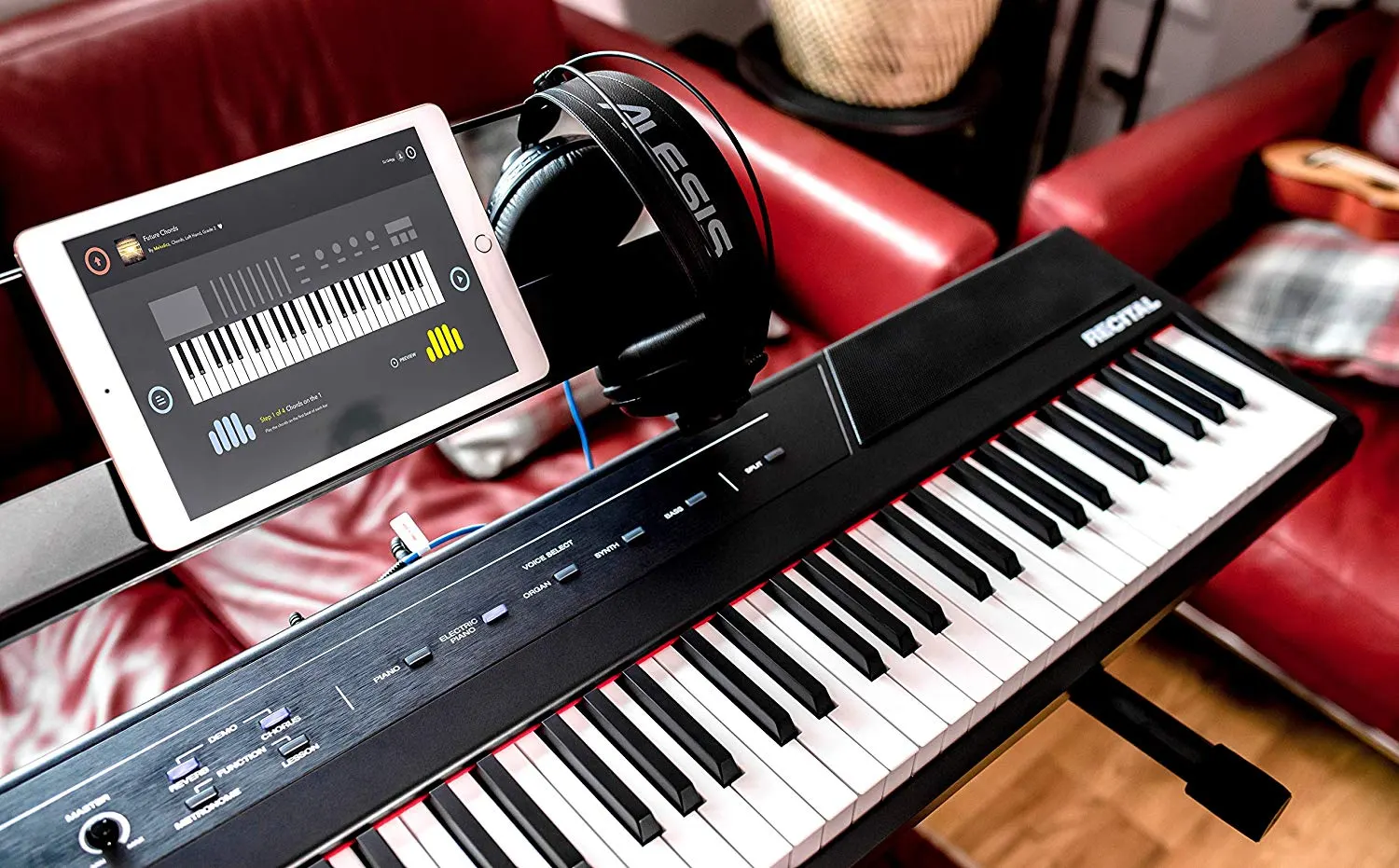In today’s digital age, the world of music has been revolutionized with the advent of digital pianos. These instruments combine the elegance and timeless appeal of traditional acoustic pianos with modern technology, offering a myriad of features to enhance the musical experience.
What are digital pianos?
Unlike their acoustic counterparts, digital pianos utilize electronic sound synthesis to produce music. They incorporate sampled sounds of acoustic pianos, offering a wide range of tones and effects. Digital pianos are equipped with various features such as weighted keys, touch sensitivity, and connectivity options, making them versatile instruments for musicians of all levels.
Evolution from acoustic pianos
Digital pianos have come a long way since their inception. Initially developed as alternatives to acoustic pianos, they have evolved to replicate the sound and feel of traditional pianos more accurately. With advancements in technology, digital pianos now offer realistic sound quality and responsive key action, challenging the notion that acoustic pianos are the only option for serious musicians.
Factors to Consider When Choosing a Digital Piano
Selecting the right digital piano can be a daunting task, given the multitude of options available in the market. Here are some crucial factors to consider before making your purchase:
Sound quality
One of the most important aspects of a digital piano is its sound quality. Look for models that offer realistic piano tones with nuanced dynamics and expressiveness. High-quality samples and sound processing technology contribute to a more authentic playing experience.
Key action and touch sensitivity
The key action refers to how the keys respond to touch, mimicking the feel of an acoustic piano. Weighted keys with graded hammer action provide a more realistic playing experience by replicating the resistance of traditional piano keys. Additionally, adjustable touch sensitivity allows for greater control over dynamics and expression.
Polyphony
Polyphony refers to the number of notes a digital piano can produce simultaneously. Higher polyphony counts enable smoother and more natural sound reproduction, especially when playing complex pieces with overlapping notes and sustained chords. Aim for a minimum of 64-note polyphony for adequate performance.
Connectivity options
Modern digital pianos come equipped with a variety of connectivity options, allowing you to integrate them seamlessly into your digital music setup. Look for features such as USB MIDI connectivity, audio input/output ports, and Bluetooth compatibility for enhanced versatility and connectivity with external devices.
Top Digital Pianos on the Market
With numerous options available, here are some of the top digital pianos renowned for their quality, performance, and features:
Yamaha YDP-144
The Yamaha YDP-144 offers an authentic acoustic piano experience with its Graded Hammer Standard (GHS) keyboard and Yamaha’s renowned Pure CF sound engine. With 192-note polyphony and a range of realistic piano tones, the YDP-144 is suitable for both beginners and experienced players.
Roland FP-30
The Roland FP-30 combines premium sound quality with portability, making it an ideal choice for gigging musicians and home enthusiasts alike. Featuring Roland’s SuperNATURAL Piano technology and PHA-4 Standard keyboard, the FP-30 delivers expressive performance and natural sound reproduction.
Casio Privia PX-770
The Casio Privia PX-770 boasts an elegant design and advanced features at an affordable price point. Equipped with Casio’s AiR sound source and Tri-Sensor Scaled Hammer Action II keyboard, the PX-770 offers authentic piano tones and responsive key action for a satisfying playing experience.
Kawai ES110
The Kawai ES110 stands out for its exceptional sound quality and compact design. Featuring Kawai’s Harmonic Imaging sound technology and Responsive Hammer Compact (RHC) keyboard action, the ES110 delivers rich, expressive piano tones and responsive touch sensitivity.
Reviews and Comparison of Each Model
Let’s delve deeper into the pros and cons of each digital piano model to help you make an informed decision:
Price Range and Budget Considerations
When considering a digital piano purchase, it’s essential to factor in your budget and the price range of available models. Here’s a breakdown of digital piano prices and budget considerations:
Entry-level options
Entry-level digital pianos typically range from $500 to $1000 and offer essential features suitable for beginners and casual players. While they may lack some advanced functionalities, entry-level models provide a solid foundation for learning and practice.
Mid-range options
Mid-range digital pianos fall within the $1000 to $2000 price range and offer a balance of quality, features, and affordability. These models often include advanced sound technology, realistic key action, and enhanced connectivity options, making them suitable for intermediate players and enthusiasts.
High-end options
High-end digital pianos surpass the $2000 price point and offer premium features, superior sound quality, and advanced functionalities tailored to professional musicians and performers. These models boast top-of-the-line sound engines, authentic key action, and comprehensive connectivity options for unparalleled performance.
Additional Features to Look For
In addition to sound quality and key action, consider the following features when choosing a digital piano:
Built-in speakers
Built-in speakers allow you to play and practice without the need for external amplification. Look for models with high-quality speakers for optimal sound reproduction and clarity.
Recording capabilities
Digital pianos with recording capabilities enable you to capture and playback your performances, making them invaluable tools for practice, composition, and music production.
Weighted keys
Weighted keys simulate the feel of acoustic piano keys by offering resistance and responsiveness. Look for models with graded hammer action for a more authentic playing experience.
Maintenance Tips for Digital Pianos
To ensure the longevity and performance of your digital piano, follow these maintenance tips:
Cleaning and dusting
Regularly clean the keys, surfaces, and internal components of your digital piano to remove dust, dirt, and debris that can affect performance and durability.
Avoiding extreme temperatures and humidity

Keep your digital piano in a controlled environment with stable temperature and humidity levels to prevent damage to electronic components and key mechanisms.
Conclusion
Choosing the best digital piano requires careful consideration of factors such as sound quality, key action, price range, and additional features. Whether you’re a beginner looking to start your musical journey or a seasoned player seeking professional performance capabilities, there’s a digital piano suited to your needs and preferences.
FAQs
Are digital pianos suitable for beginners?
Yes, digital pianos are ideal for beginners due to their affordability, versatility, and features tailored to learning and practice.
Can I connect a digital piano to my computer or mobile device?
Yes, most digital pianos come equipped with USB MIDI connectivity, allowing you to connect them to computers, tablets, and smartphones for music production, recording, and learning applications.
How often should I tune a digital piano?
Unlike acoustic pianos, digital pianos do not require tuning since they utilize electronic sound synthesis. However, regular maintenance and cleaning are essential to ensure optimal performance and longevity.
Can I use headphones with a digital piano?
Yes, digital pianos often feature headphone jacks for private practice and silent playing, making them suitable for late-night practice sessions or shared living spaces.
Are digital pianos portable?
Yes, many digital pianos are designed with portability in mind, featuring lightweight construction and compact dimensions for easy transportation and setup.
